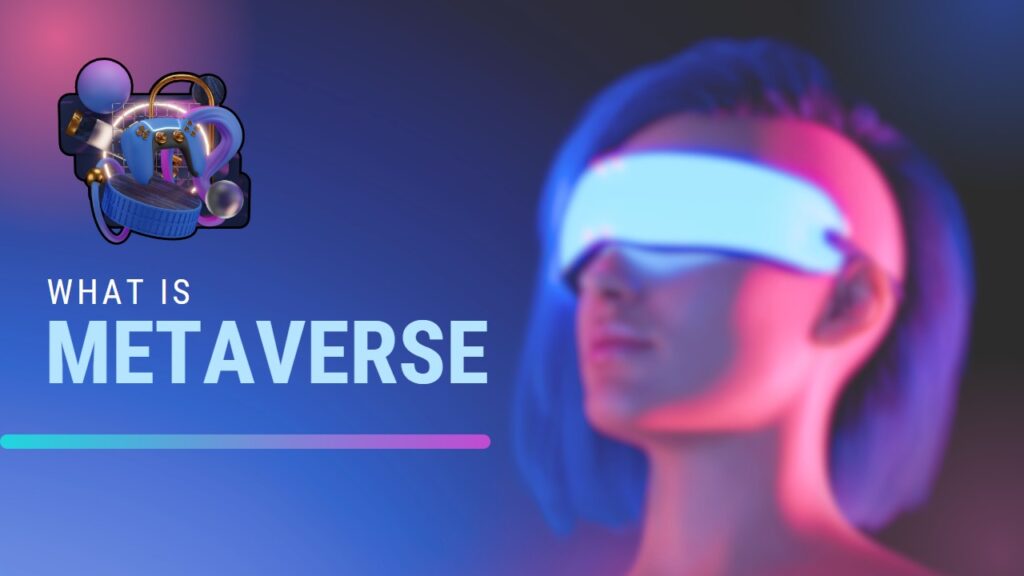In recent years, the term “metaverse” has gained significant traction, capturing the imagination of technology enthusiasts and visionaries alike. This virtual realm, often portrayed in science fiction novels and movies, holds the promise of a fully immersive and interconnected digital world.
When envisioning the metaverse, one might conjure an image of an individual engrossed in a video game, donning a substantial headset that obscures a significant portion of their face.
The fact that digital gaming has emerged as an early frontrunner in embracing the metaverse is hardly astonishing.

However, it is crucial to recognize that if the metaverse were solely centered around gaming, Mr. Zuckerberg would not have staked the entirety of his company’s future on its development.
In 2021, Mark Zuckerberg, the CEO of Facebook, made a significant announcement regarding the company he established. He unveiled the rebranding of Facebook to Meta, signifying a pivotal shift in the company’s focus.
Simultaneously, the once-niche and futuristic concept of the “metaverse” transitioned into a prominent and integral component of Meta’s overarching business strategy. This strategic move by Zuckerberg demonstrates the metaverse’s growing importance and its journey from a futuristic concept to a mainstream reality in the business landscape.
But what exactly is the Metaverse, and what implications does it hold for the future of technology and human interaction?
Table of Contents
What is the Metaverse?
The metaverse can be described as a collective virtual shared space that encompasses a vast array of digital experiences, environments, and interactions. It goes beyond the concept of virtual reality (VR) and extends into augmented reality (AR), mixed reality (MR), blockchain, and even the internet itself. These technologies enable individuals to engage in interactions with one another, often involving both human and non-human avatars.
In essence, the metaverse aims to create a seamless and interconnected digital universe that mirrors the physical world in its complexity and social dynamics.
The metaverse is not owned by any single company, including Meta. It’s more accurate to think of it as multiple metaverses, rather than one singular entity, as it is still in the early stages of development.
Numerous metaverses are currently in existence, predominantly created by individual companies with specific objectives in mind. However, there is limited interoperability among these metaverses, as the establishment of standards for sharing user identities and data across diverse metaverse spaces is yet to be developed.
The Building Blocks of the Metaverse
To comprehend the inner workings of the metaverse, it is essential to understand its fundamental building blocks:
- Virtual Reality (VR): VR provides a fully immersive and simulated experience, transporting users to digital environments that can replicate real-world settings or entirely fantastical realms. By wearing a VR headset, users can explore, interact, and engage with these computer-generated worlds. In the metaverse, virtual reality can be used to create realistic and immersive experiences that simulate real-world environments or entirely new ones. This technology has the potential to transform the way we interact with digital content, from entertainment to education and beyond.
- Augmented Reality (AR): AR overlays digital information and experiences onto the real world, enhancing our perception of reality. Through the use of mobile devices or smart glasses, AR blends the physical and digital realms, enriching our surroundings with digital elements and interactive content. By superimposing digital content onto the real world, AR enables users to engage with their surroundings in new and exciting ways. For example, in the realm of gaming, AR can be used to create interactive environments that respond to the user’s movements and actions. This can lead to a more engaging and entertaining experience for players.
- Mixed Reality (MR): MR represents a hybrid approach that merges the virtual and physical worlds. It enables users to interact with and manipulate virtual objects while coexisting in a real-world setting. This technology seamlessly blends digital content with the user’s environment, creating a sense of immersion and presence.
- Internet Connectivity: The internet forms the backbone of the metaverse, serving as the medium through which users access and interact with the digital universe. It enables seamless communication, collaboration, and data exchange across various virtual spaces and platforms.
- Blockchain: blockchain technology is emerging as one of the critical building blocks. Blockchain’s distributed ledger system provides a transparent and secure way to track ownership and transactions within virtual environments. By using decentralized protocols, blockchain can help create a more open and interoperable Metaverse. Additionally, blockchain enables the creation and exchange of digital assets that can be used within the Metaverse, such as virtual real estate, in-game items, and cryptocurrencies. As more developers and companies explore the potential of the Metaverse, blockchain’s role in facilitating trust, decentralization, and interoperability will become increasingly vital.
Breaking Down Barriers
The concept of the metaverse holds the potential to revolutionize numerous industries and reshape the way we live, work, and play. Here are some areas where the metaverse is expected to make a profound impact:
Social Interaction and Connectivity
The metaverse promises to redefine social interaction by transcending physical boundaries. It allows people from different corners of the globe to come together in shared virtual spaces, fostering connections, and enabling collaborative experiences. Imagine attending virtual meetings, concerts, or even family gatherings, all from the comfort of your home.
Gaming and Entertainment
The gaming industry is poised to be one of the primary beneficiaries of the metaverse. By creating immersive and interconnected gaming experiences, players can explore vast virtual worlds, interact with other gamers in real time, and partake in adventures that were previously unimaginable. Additionally, the metaverse opens up new avenues for immersive storytelling and interactive entertainment beyond traditional mediums.
Education and Training
The metaverse has the potential to transform education and training by providing dynamic and engaging learning environments. Students can delve into historical events, conduct scientific experiments, or practice real-world skills through realistic simulations. This immersive approach to education can enhance comprehension, retention, and overall learning outcomes.
Commerce and Business
The metaverse presents unprecedented opportunities for commerce and business interactions. Virtual marketplaces can enable seamless buying and selling of digital assets, virtual goods, and even real-world products. Companies can leverage the metaverse to create immersive brand experiences, host virtual events, and connect with customers in novel ways, transcending traditional physical limitations.
Personal Expression and Creativity
The metaverse empowers individuals to express themselves creatively in new and exciting ways. Through customizable avatars, users can embody their digital personas, showcasing their unique identities and artistic creations. Virtual art galleries, fashion shows, and music festivals provide platforms for creative expression and allow artists to reach global audiences effortlessly.
Embracing the Metaverse: Challenges and Considerations
While the vision of the metaverse is undoubtedly captivating, there are various challenges and considerations that need to be addressed to ensure its successful implementation:
- Privacy and Security: As users spend more time in the metaverse, safeguarding personal information and ensuring secure interactions become paramount. Striking a balance between immersive experiences and protecting individual privacy will be a critical aspect of metaverse development.
- Interoperability and Standards: To truly realize the metaverse’s potential, interoperability and standardization across different platforms and technologies are essential. Establishing common frameworks will enable seamless collaboration, communication, and content transfer between virtual environments.
- Access and Inclusivity: Ensuring equitable access to the metaverse is crucial to avoid creating digital divides. Efforts must be made to bridge the gap between those who have access to the necessary technology and those who do not. Furthermore, considerations for individuals with disabilities should be integrated into the design and development of metaverse experiences.
Stepping into a New Reality
The metaverse represents a paradigm shift in how we interact with technology, breaking down barriers between the physical and digital worlds. With its potential to revolutionize social interaction, entertainment, education, commerce, and personal expression, the metaverse offers a glimpse into an exciting and interconnected future.
As the technological landscape continues to evolve, embracing the possibilities and addressing the challenges of the metaverse will be key to shaping a more immersive and inclusive digital world for all.





